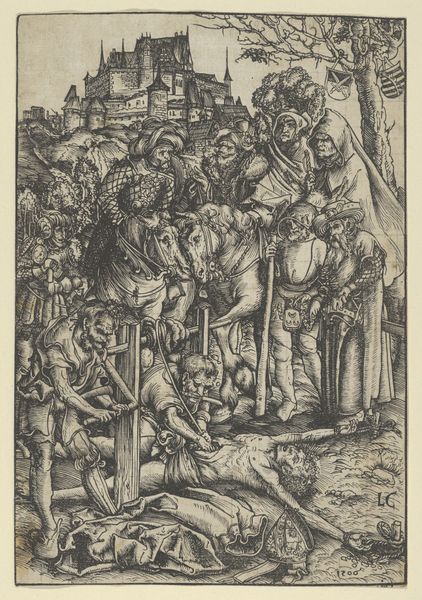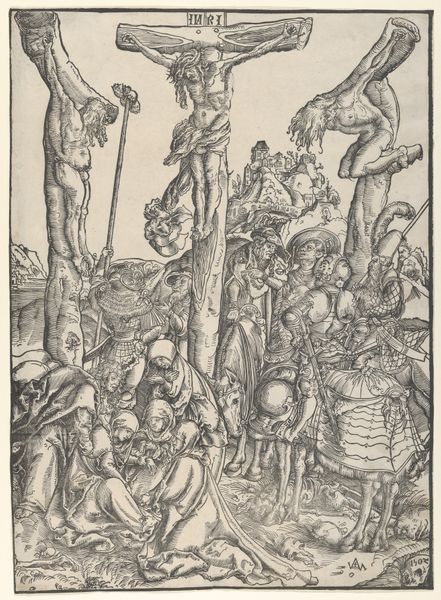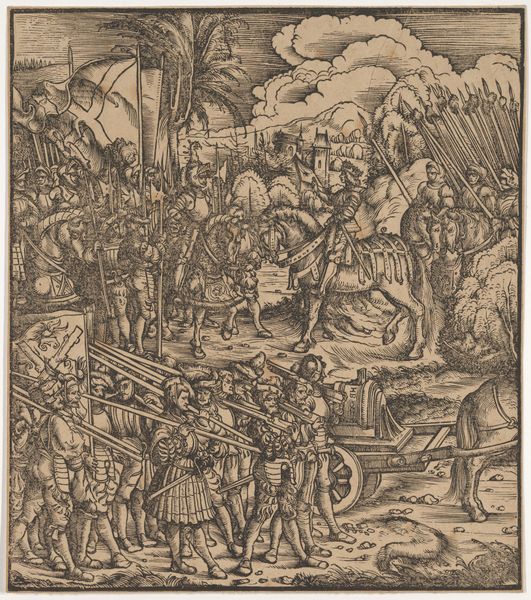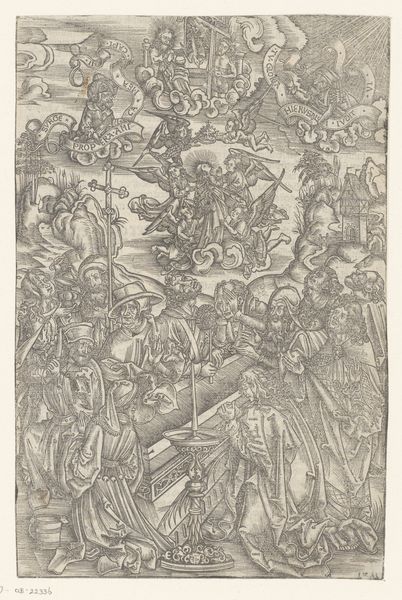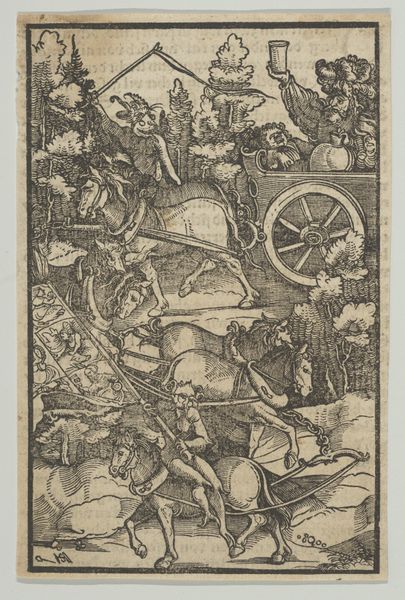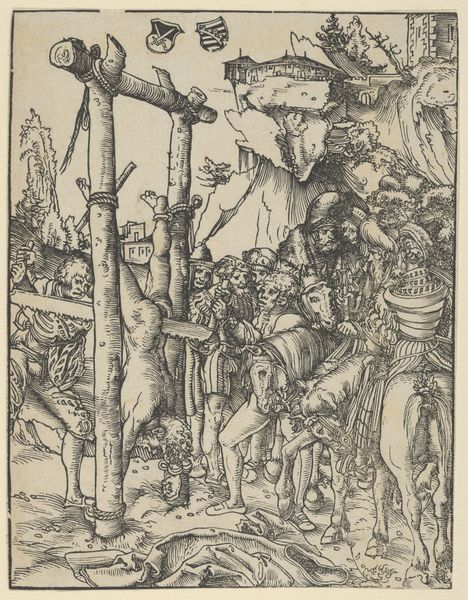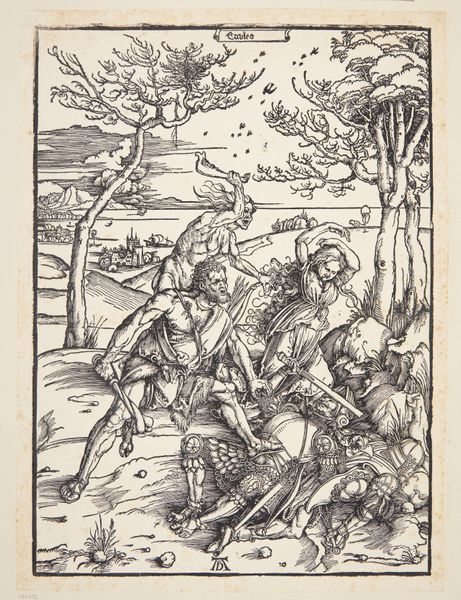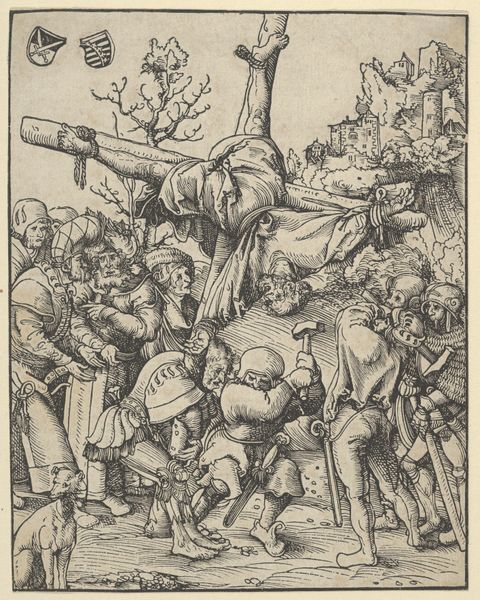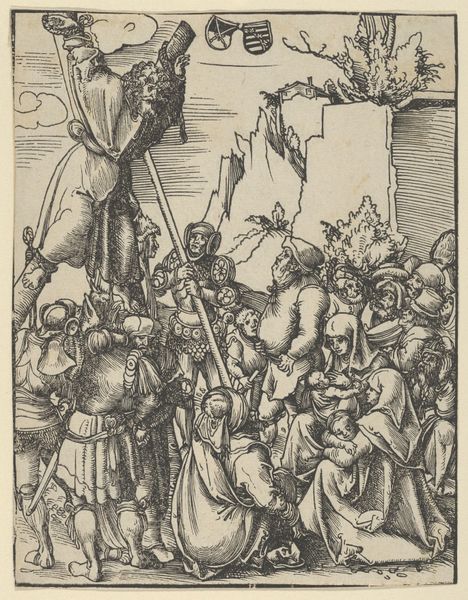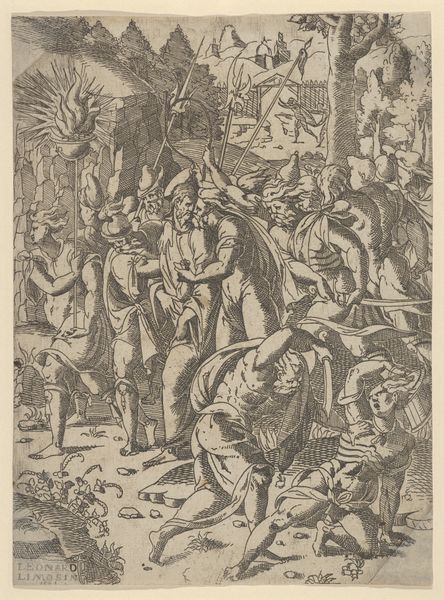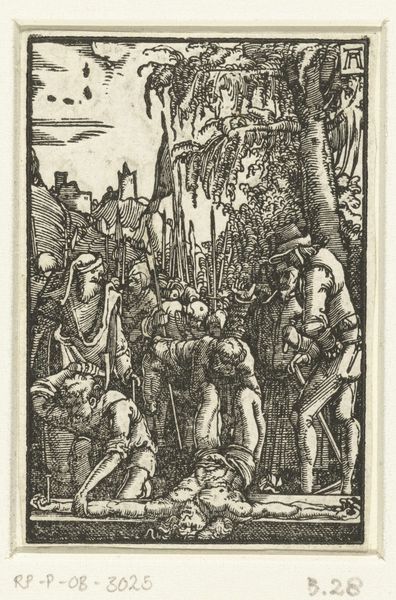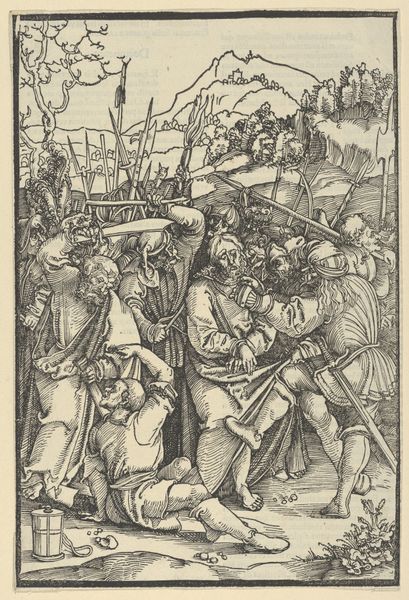
drawing, print, woodcut
#
drawing
#
narrative-art
# print
#
landscape
#
figuration
#
woodcut
#
crucifixion
#
history-painting
#
northern-renaissance
#
christ
Dimensions: sheet: 8 3/8 x 5 3/4 in. (21.3 x 14.6 cm)
Copyright: Public Domain
Curator: Dürer’s woodcut, "Calvary with the Three Crosses", completed around 1503–1504. Look at how effectively he conveys such profound grief and despair through a rather limited medium. Editor: Stark, isn’t it? The composition, densely packed and unbalanced, almost makes the grief feel… palpable. I am interested in the block itself; the labor involved in its making is striking. Curator: Precisely. Consider the context of printmaking in the Northern Renaissance; prints democratized imagery, spreading ideas in ways previously unimaginable. Dürer understood the power of reproducible images in shaping public devotion. The theme of Crucifixion had the right potential at the time. Editor: Indeed. This woodcut as a commodity circulated through a network of trade. It had very hands-on process of creation, from cutting the block to printing, thus directly linked to craft and labor, which are usually overlooked by historians. I mean, you can almost see the pressure of the press in the lines. Curator: And note how Dürer adapts traditional religious iconography for a burgeoning merchant class. His strategic approach catered to the growing demand for visually arresting devotional aids, which is impressive for that time. Editor: Right, we tend to separate so-called high art from things deemed practical, but Dürer blurred that distinction in printmaking. Also, I find compelling how wood, as a material, inevitably leaves a specific mark - think about how each print has its unique quality according to the variations in the material. Curator: Absolutely. It speaks volumes about his acute understanding of the contemporary religious landscape. He was incredibly smart at marketing art for both established patrons and newly literate consumers. Editor: Seeing all of that labour…makes the whole spectacle more visceral, even. Dürer really worked with material properties to drive home the emotional weight of this crucifixion scene. It’s powerful, thinking of this piece, touched by human hands so many times over the years. Curator: Ultimately, what remains for us is to delve deep into how imagery shaped social experience, while reflecting the complex nexus of piety, politics, and patronage during the early sixteenth century. Editor: I’d argue, though, we must equally consider how a very common medium created something so singular, and how production and accessibility play a role into what defines "Art".
Comments
No comments
Be the first to comment and join the conversation on the ultimate creative platform.
